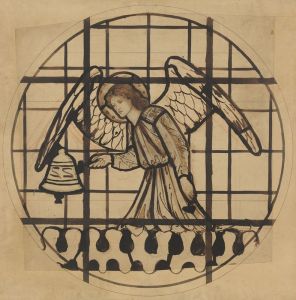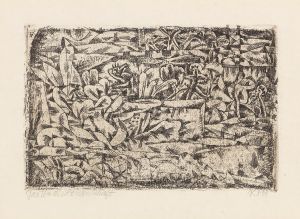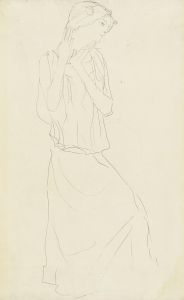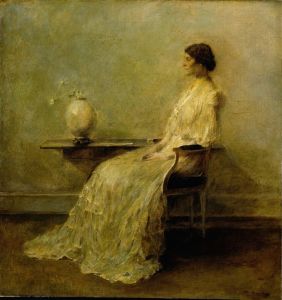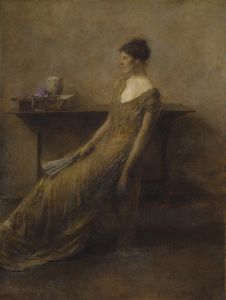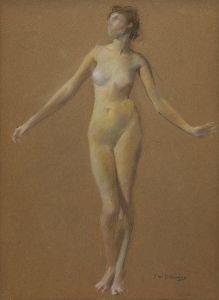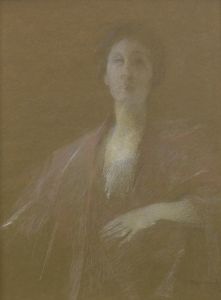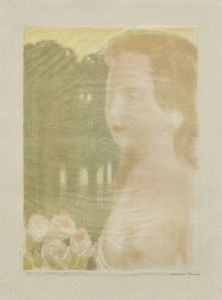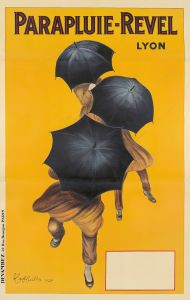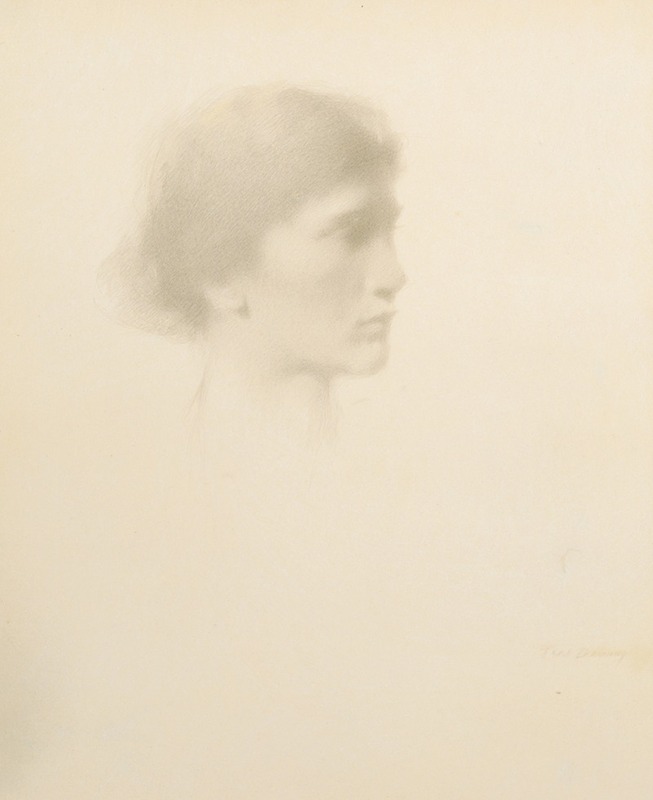
Head of a Woman
A hand-painted replica of Thomas Wilmer Dewing’s masterpiece Head of a Woman, meticulously crafted by professional artists to capture the true essence of the original. Each piece is created with museum-quality canvas and rare mineral pigments, carefully painted by experienced artists with delicate brushstrokes and rich, layered colors to perfectly recreate the texture of the original artwork. Unlike machine-printed reproductions, this hand-painted version brings the painting to life, infused with the artist’s emotions and skill in every stroke. Whether for personal collection or home decoration, it instantly elevates the artistic atmosphere of any space.
Thomas Wilmer Dewing's Head of a Woman is a painting created by the American artist, who is best known for his tonalist style and depictions of elegant, introspective women. Dewing (1851–1938) was a prominent figure in the late 19th and early 20th centuries, associated with the American Aesthetic Movement. His works often emphasized mood, subtle color harmonies, and a sense of quiet refinement.
Head of a Woman exemplifies Dewing's focus on the female figure, a recurring subject in his oeuvre. The painting portrays a woman’s head and shoulders, rendered with soft, delicate brushstrokes that highlight her contemplative expression. Dewing’s tonal palette, which often included muted greens, grays, and golds, is evident in this work, creating an ethereal and dreamlike quality. The sitter’s identity is unknown, as Dewing frequently used anonymous models or idealized figures rather than specific individuals. This approach allowed him to focus on the aesthetic and emotional resonance of the composition rather than a direct likeness.
The painting reflects Dewing's interest in creating a harmonious balance between form and atmosphere. His technique often involved layering thin glazes of paint to achieve a luminous effect, a hallmark of his tonalist style. This method imbues Head of a Woman with a sense of depth and subtlety, drawing the viewer into the introspective mood of the piece.
Dewing was a member of the Ten American Painters, a group of artists who broke away from the National Academy of Design in 1897 to pursue a more modern and individualistic approach to art. His work was influenced by both European traditions, particularly the tonalism of James McNeill Whistler, and the ideals of the Aesthetic Movement, which emphasized "art for art's sake." Dewing’s paintings often evoke a sense of timeless beauty and quietude, qualities that are evident in Head of a Woman.
The exact date of creation for Head of a Woman is not definitively documented, but it is consistent with Dewing’s mature style, which he developed in the late 19th and early 20th centuries. The painting is held in a private collection or museum, though specific details about its current location or provenance are not widely available.
As with many of Dewing’s works, Head of a Woman invites viewers to appreciate the subtle interplay of light, color, and form, as well as the emotional depth conveyed through the subject’s expression. It remains a testament to Dewing’s mastery of tonalism and his ability to capture the quiet elegance of his subjects.





